You’ve more than likely learned to keep your verticals and horizontals straight. There is nothing as distracting as looking at a sailing boat going up or down a hill. The horizon really needs to be straight in many photos. But not all of them. Here’s how to break photography rules with Dutch angle photography.
What Is Dutch Angle Photography?
A Dutch angle is a rather non-traditional style of composition. It is the type of framing that involves setting your camera off axis. On purpose. This means that the vertical and horizontal lines in the photo will not be parallel with the edges of the frame. It looks very much like what happens when you tilt your head to the side. Dutch angle is also known as Dutch tilt, canted frame or oblique angle photography. Sometimes it’s even called the Batman angle. This is due to early Batman television series making such exaggerated use of it. It did not actually originate in the Netherlands, as the name may suggest. It comes from German filmmakers in the early 20th century. The term used then, the Deutsch tilt, (which is German for ‘German’,) was bastardized. It became the Dutch tilt. This composition technique is made by rotating the camera. It was used to imply a sense of unease or disorientation, often without camera movement. This method became popular among expressionists. The tilt shot of filming remains in use. It has been widely adopted by photographers the world over.
How Is Dutch Angle Photography Used?
Dutch camera angles can be used in many situations for different purposes. The Dutch tilt is more a technique rather than a rule of composition. It is very easy to create this type of canted shot. All you need to do is to tilt your camera off axis. As with any photographic composition technique, it can be used well or very poorly. To make the most of Dutch angle shots, make the oblique angle you choose look very deliberate. When the Dutch angle is subtle it can look like a mistake. But when you can incorporate this tilt in your composition the impact it has can be very positive. Using a Dutch tilt with intention, rather than randomly, is creative. It does not need to look like a mistake. With oblique angle shots you are able to communicate a sense of fear, drunkenness or agitation in your photographs. Used well, it can also create a sense of freedom and fun. Combining a Dutch angle with various rules of composition can result in more creative photos. The more intention you use it with the more effective your results will be. Leading lines, the use of strong diagonals and even curves can be enhanced when you use a Dutch tilt. If you’re photographing a scene with strong lines and can’t make a strong enough photo, move your camera off axis. Running a strong line from one corner of your frame to the other using a Dutch tilt can add impact to your composition. Create a powerful diagonal from either a vertical or horizontal line. Doing this you are communicating something alternative to the viewer. Using the Dutch tilt leading lines often have far more impact. This is because you are employing two techniques. They’ll draw the viewer’s eye towards the most important area of your photograph. Don’t worry about always having your horizon straight. So long as your composition exaggerates the tilt, it will look calculated and not like a mistake.
Use A Dutch Camera Angle to Squeeze More Into Your Frame
When you’re in a tight spot you should consider making use of a tilt shot. If you’re photographing a subject you can’t quite surround with your frame tilting your camera can help. The diagonal axis of your frame is longer than the longest side. Try turning your camera left or right by 45 degrees to 90 degrees. You may be able to fit the whole of your subject in your composition. Even when you have the option of using a wider angle lens, choosing to use a canted frame can add impact. The natural choice for photographers when you want to fit more into the frame is to zoom out or move further back. Experiment with the Dutch angle instead. You may produce more interesting results.
Use an Oblique Angle Shot to Give An Alternative Perspective
Make good use of Dutch angles when you are photographing something common. Making the ordinary look interesting can be challenging for many photographers. You have to come up with something unique. That’s how people will take notice of them. Using a Dutch tilt on its own, or in combination with other camera techniques, can result in more creative photographs. Don’t be tempted to settle for a quick snapshot of mundane subjects. When you’re faced with photographing something standard, make a non-standard photograph. This way it’s more likely to be looked at by more people. I encourage people who take our travel photography workshops to avoid travel snapshots. Monks, temples and tuk tuks are staple subject material for photographers when they visit Thailand. We’ve all glanced over these photos. Consider using a Dutch tilt to help make them more outstanding. The strong vertical lines of buildings and trees often lend towards the use of a good off axis camera tilt. I have photographed this temple, Wat Pra Dara Pirom, many times traditionally. In this image, I wanted to include the reflection of the building in the pond. A Dutch tilt provided a good solution. The strong dark lines of the palm trees help exaggerate the effect well.
Conclusion
Using any photographic technique well is often a matter of experimentation. Learning to master the Dutch angle is no exception. Try tilt shots whenever you are challenged. Use them to present an interesting angle on your subject. There are no real rules so experimentation is the key. You need to go with your feelings and decide whether or not you like the results. Some situations will look better photographed with a more acute angle. Others will be more interesting if the tilt is more subtle. The most important aspect of making good use of the Dutch angle in photography is to make it not look like a mistake. The more intentional you can make this technique look the stronger your photos will be.
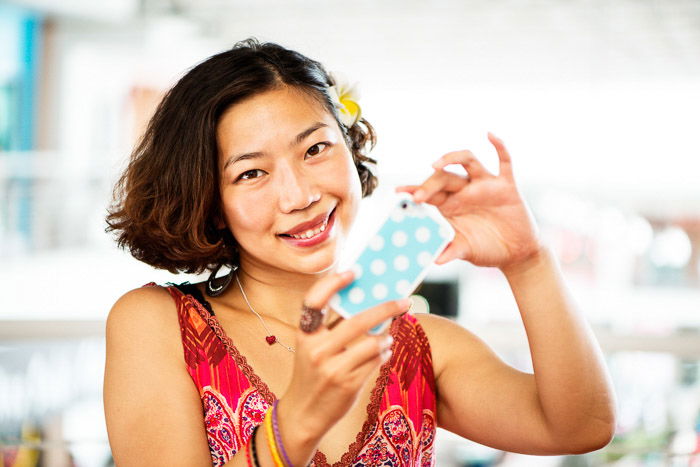

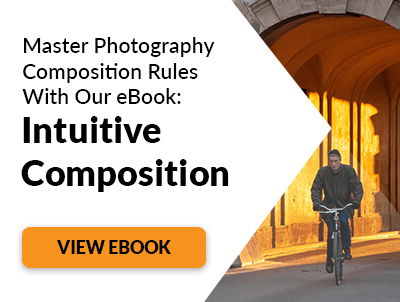

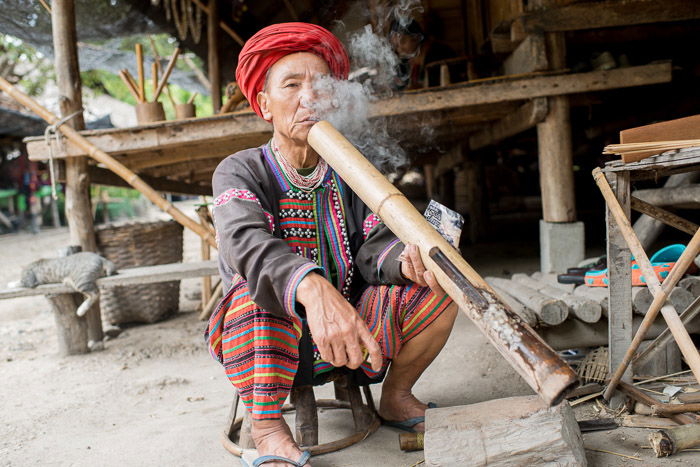
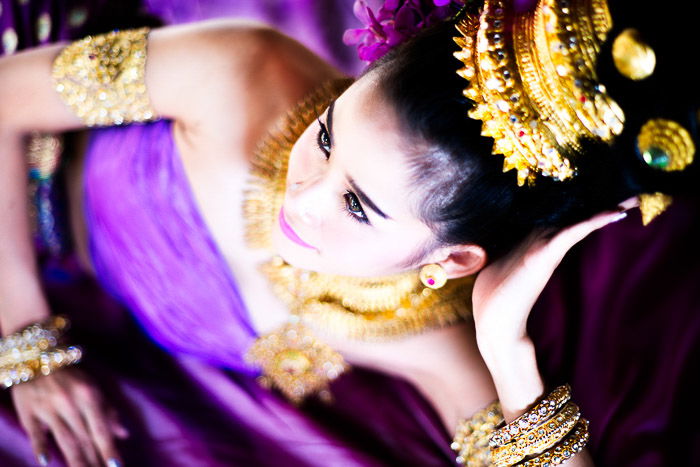
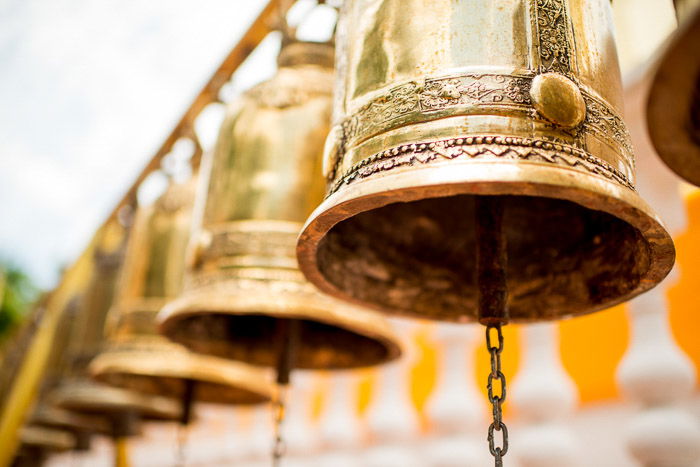

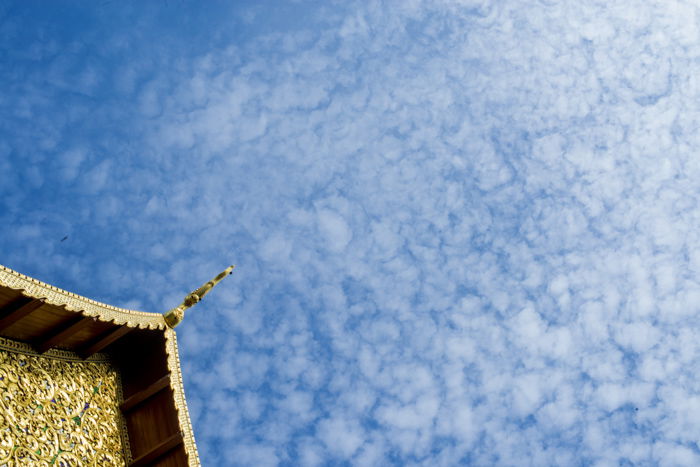
title: “How To Shoot Dutch Angle Photography Camera Angles " ShowToc: true date: “2023-02-13” author: “David Vargason”
You’ve more than likely learned to keep your verticals and horizontals straight. There is nothing as distracting as looking at a sailing boat going up or down a hill. The horizon really needs to be straight in many photos. But not all of them. Here’s how to break photography rules with Dutch angle photography.
What Is Dutch Angle Photography?
A Dutch angle is a rather non-traditional style of composition. It is the type of framing that involves setting your camera off axis. On purpose. This means that the vertical and horizontal lines in the photo will not be parallel with the edges of the frame. It looks very much like what happens when you tilt your head to the side. Dutch angle is also known as Dutch tilt, canted frame or oblique angle photography. Sometimes it’s even called the Batman angle. This is due to early Batman television series making such exaggerated use of it. It did not actually originate in the Netherlands, as the name may suggest. It comes from German filmmakers in the early 20th century. The term used then, the Deutsch tilt, (which is German for ‘German’,) was bastardized. It became the Dutch tilt. This composition technique is made by rotating the camera. It was used to imply a sense of unease or disorientation, often without camera movement. This method became popular among expressionists. The tilt shot of filming remains in use. It has been widely adopted by photographers the world over.
How Is Dutch Angle Photography Used?
Dutch camera angles can be used in many situations for different purposes. The Dutch tilt is more a technique rather than a rule of composition. It is very easy to create this type of canted shot. All you need to do is to tilt your camera off axis. As with any photographic composition technique, it can be used well or very poorly. To make the most of Dutch angle shots, make the oblique angle you choose look very deliberate. When the Dutch angle is subtle it can look like a mistake. But when you can incorporate this tilt in your composition the impact it has can be very positive. Using a Dutch tilt with intention, rather than randomly, is creative. It does not need to look like a mistake. With oblique angle shots you are able to communicate a sense of fear, drunkenness or agitation in your photographs. Used well, it can also create a sense of freedom and fun. Combining a Dutch angle with various rules of composition can result in more creative photos. The more intention you use it with the more effective your results will be. Leading lines, the use of strong diagonals and even curves can be enhanced when you use a Dutch tilt. If you’re photographing a scene with strong lines and can’t make a strong enough photo, move your camera off axis. Running a strong line from one corner of your frame to the other using a Dutch tilt can add impact to your composition. Create a powerful diagonal from either a vertical or horizontal line. Doing this you are communicating something alternative to the viewer. Using the Dutch tilt leading lines often have far more impact. This is because you are employing two techniques. They’ll draw the viewer’s eye towards the most important area of your photograph. Don’t worry about always having your horizon straight. So long as your composition exaggerates the tilt, it will look calculated and not like a mistake.
Use A Dutch Camera Angle to Squeeze More Into Your Frame
When you’re in a tight spot you should consider making use of a tilt shot. If you’re photographing a subject you can’t quite surround with your frame tilting your camera can help. The diagonal axis of your frame is longer than the longest side. Try turning your camera left or right by 45 degrees to 90 degrees. You may be able to fit the whole of your subject in your composition. Even when you have the option of using a wider angle lens, choosing to use a canted frame can add impact. The natural choice for photographers when you want to fit more into the frame is to zoom out or move further back. Experiment with the Dutch angle instead. You may produce more interesting results.
Use an Oblique Angle Shot to Give An Alternative Perspective
Make good use of Dutch angles when you are photographing something common. Making the ordinary look interesting can be challenging for many photographers. You have to come up with something unique. That’s how people will take notice of them. Using a Dutch tilt on its own, or in combination with other camera techniques, can result in more creative photographs. Don’t be tempted to settle for a quick snapshot of mundane subjects. When you’re faced with photographing something standard, make a non-standard photograph. This way it’s more likely to be looked at by more people. I encourage people who take our travel photography workshops to avoid travel snapshots. Monks, temples and tuk tuks are staple subject material for photographers when they visit Thailand. We’ve all glanced over these photos. Consider using a Dutch tilt to help make them more outstanding. The strong vertical lines of buildings and trees often lend towards the use of a good off axis camera tilt. I have photographed this temple, Wat Pra Dara Pirom, many times traditionally. In this image, I wanted to include the reflection of the building in the pond. A Dutch tilt provided a good solution. The strong dark lines of the palm trees help exaggerate the effect well.
Conclusion
Using any photographic technique well is often a matter of experimentation. Learning to master the Dutch angle is no exception. Try tilt shots whenever you are challenged. Use them to present an interesting angle on your subject. There are no real rules so experimentation is the key. You need to go with your feelings and decide whether or not you like the results. Some situations will look better photographed with a more acute angle. Others will be more interesting if the tilt is more subtle. The most important aspect of making good use of the Dutch angle in photography is to make it not look like a mistake. The more intentional you can make this technique look the stronger your photos will be.








